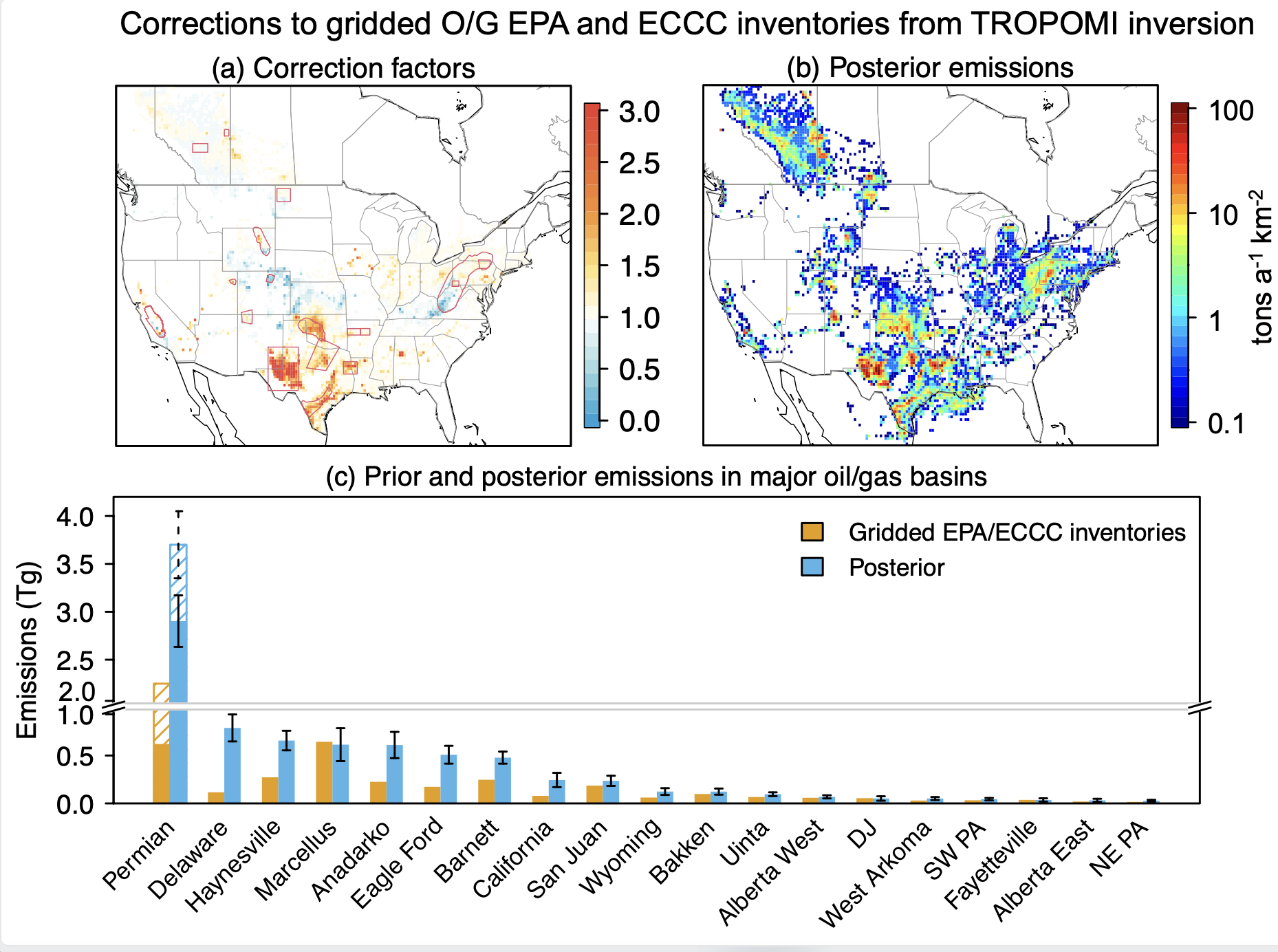Satellite quantification of oil and natural gas methane emissions in the US and Canada including contributions from individual basins
Lu Shen1,2,3*, Ritesh Gautam3, Mark Omara3, Daniel Zavala-Araiza3,4, Joannes D. Maasakkers5, Tia R. Scarpelli2, Alba Lorente5, David Lyon3, Jianxiong Sheng6, Daniel J. Varon2, Hannah Nesser2, Zhen Qu2, Xiao Lu2,7, Melissa P. Sulprizio2, Steven P. Hamburg3, Daniel J. Jacob2
1Department of Atmospheric and Oceanic Sciences, School of Physics, Peking University, Beijing 100871, China
2School of Engineering and Applied Sciences, Harvard University, Cambridge, Massachusetts 02138, United States
3Environmental Defense Fund, Washington DC 20009, United States
4Institute for Marine and Atmospheric Research Utrecht, Utrecht University, 3584 CC, Utrecht, The Netherlands
5SRON Netherlands Institute for Space Research, Leiden, the Netherlands
6Center for Global Change Science, Massachusetts Institute of Technology, Cambridge, Massachusetts 02139, United States
7School of Atmospheric Sciences, Sun Yat-sen University, Zhuhai, Guangdong, China 519082
Correspondence to: Lu Shen (lshen@pku.edu.cn)
Abstract. We use satellite methane observations from the Tropospheric Monitoring Instrument (TROPOMI), for May 2018 to February 2020, to quantify methane emissions from individual oil and natural gas (O/G) basins in the US and Canada using a high-resolution (~ 25 km) atmospheric inverse analysis. Our satellite-derived emission estimates show good consistency with in-situ field measurements (R=0.96) in 14 O/G basins distributed across the US and Canada. Aggregating our results to the national scale, we obtain O/G-related methane emission estimates of 12.6±2.1 Tg a-1 for the US and 2.2±0.6 Tg a-1 for Canada, respectively 80% and 40% higher than the national inventories reported to the United Nations. About 70% of the discrepancy in the EPA inventory can be attributed to five O/G basins: the Permian, Haynesville, Anadarko, Eagle Ford, and Barnett, which in total account for 40% of US emissions. We show more generally that our TROPOMI inversion framework can quantify methane emissions exceeding 0.2-0.5 Tg a-1 from individual O/G basins, thus providing an effective tool for monitoring methane emissions from large O/G basins globally.




